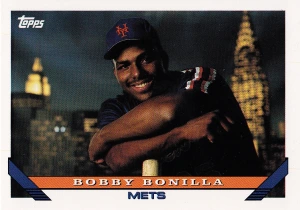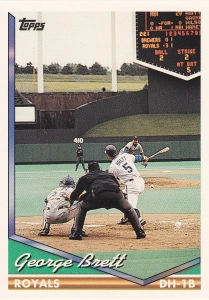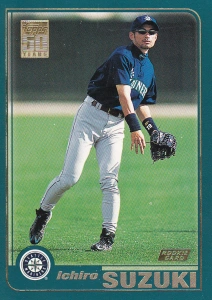1986 Topps
Card I selected: #200 – Mike Schmidt
In 1985, I picked Gary Mathews for my parallel. In 1986, I’m back on the Hall of Fame train. I went with my personally deemed “best card” from the 1986 Topps set – Mike Schmidt. The 1986 set is not one known for great action shots, or great anything shots for that matter. But this is a really good one, and it’s of Mike Schmidt. It looks like he just went yard.
# of cards (including the Topps card): 4
The parallel sets in 1986 include:
- O-Pee-Chee
- Tiffany
- Super
Scans:
1986 Topps #200
1986 O-Pee-Chee #200
The Canadian version was, as always, half the size of the Topps set. Since Schmidt was in the first half of the set, his OPC card has the same number.
Here are the differences for this card:
- The “O-Pee-Chee” logo on the front replaces the Topps logo in the top right. It has a yellow box as background that’s not on the Topps version.
- On some of the cards (not this one), the card number is different.
- The copyright on the bottom of the back says O-Pee-Chee and notes the card was printed in Canada.
- The card is printed on white card stock.
- Any wording on the back is in both English and French.
- It says O-Pee-Chee on the back instead of “Topps”.
1986 Topps Tiffany #200
For the 3rd time, Topps issued a Tiffany variation in factory set form, printed on white cardstock with glossy coating on the front. The 1986 Tiffany set had the same production run as the previous year – limited to 5,000 sets.
1986 Topps Super #49
Also for the 3rd year, Topps also made a set that was much larger (4-7/8 x 6-7/8) than the base, again with 60 cards. The numbering is obviously different from the base set. Topps “Super” cards came in 1-card packs, 36 per box. Other than the size and numbering difference, these cards have an extra bit of write-up at the bottom, highlighting the player’s team leading stats.
The “Rainbow”:
Any sets I didn’t get: There’s no others that I know of.
Other cards I would have liked to do:
I would probably have picked the Tony Perez card, which has Eric Davis on it. But he didn’t have a card in the Topps Super set. Pete Rose has a really notable card, Rod Carew has a nice last card in this set, and Bo Diaz was one of my favorite pictures. Only Rose has a card in the Super set, and while card #1 of the set would have been a good pick, I just like the Schmidt card better.
















































